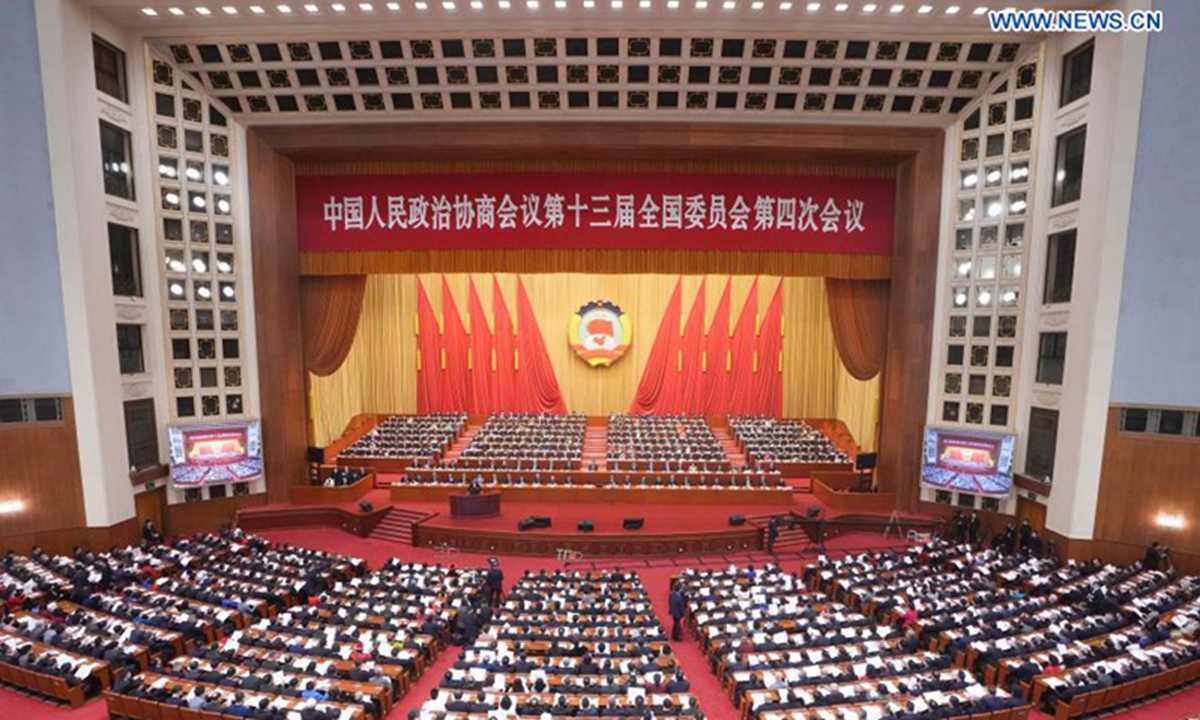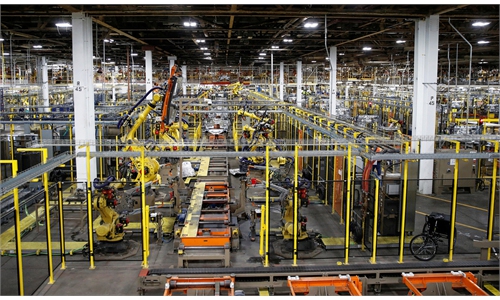
The fourth session of the 13th National Committee of the Chinese People's Political Consultative Conference (CPPCC) opens at the Great Hall of the People in Beijing, capital of China, March 4, 2021. Photo: Xinhua
China is expected to step into the ranks of high-income economies during the 14th Five-Year Plan 2021-25 period, said Lin Yifu, a standing committee member of the Chinese People's Political Consultative Conference (CPPCC) National Committee, dean and professor at the Institute of New Structural Economics of Peking University predicted on Tuesday.
"This will be an important milestone in the history of human economy," he said in an interview during the two sessions.
Lin said that the optimistic prognoses is based on China's complete industrial chain, rich industrial range, and advantages in new technologies including 5G and artificial intelligence.
A high-income economy is defined by the World Bank as a country with a gross national income per capita of $12,536 or more in 2019. By 2020, China's GDP has exceeded 100 trillion yuan ($15.37 trillion), with the per capita GDP exceeding $10,000 for two consecutive years.
Lin pointed out that there are still some problems to be solved at the same time of economic development such as income gap, urban-rural gap, environmental pollution and aging population.
"We should make good use of the dual circular economy mode, be more open to international economy, and at the same time, let common people share the fruits of economic development," Lin said.
In terms of aging population Lin suggested extending the retirement age and transferring the rural labor force to the manufacturing industry in order to maintain the demographic dividend.
He also pointed out that China should continue to upgrade industry structure from labor intensive to capital intensive, and onwards to technology intensive industries, from low value-added manufacturing industries to high value-added manufacturing industries to catch the dividends of economic growth.
Global Times

